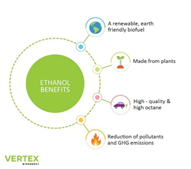Bioethanol blending in Petrol
- Posted By
10Pointer
- Categories
Environment
- Published
19th Aug, 2020
-
- The government has set targets of 10% bioethanol blending of petrol by 2022 and to raise it to 20% by 2030 under the ethanol blending programme.
- Ethanol blending is the practice of blending petrol with ethanol.
- 1G and 2G bioethanol plants will play a key role in making bio-ethanol available for blending.
- Its aim is to curb carbon emissions and reduce India’s dependence on imported crude oil.
- 1G bioethanol plants utilise sugarcane juice and molasses, by-products in production of sugar, as raw material to produce bioethanol.
- 2G plants utilise surplus biomass and agricultural waste to produce bioethanol.
- The sugar mills pay high prices for sugarcane set by the government.
- The prices of both sugarcane and bio-ethanol are set by the central government.
- The price of obtaining agricultural waste required for production of bio-ethanol at 2G plants was currently too high for it to be viable for private investors in the country.

